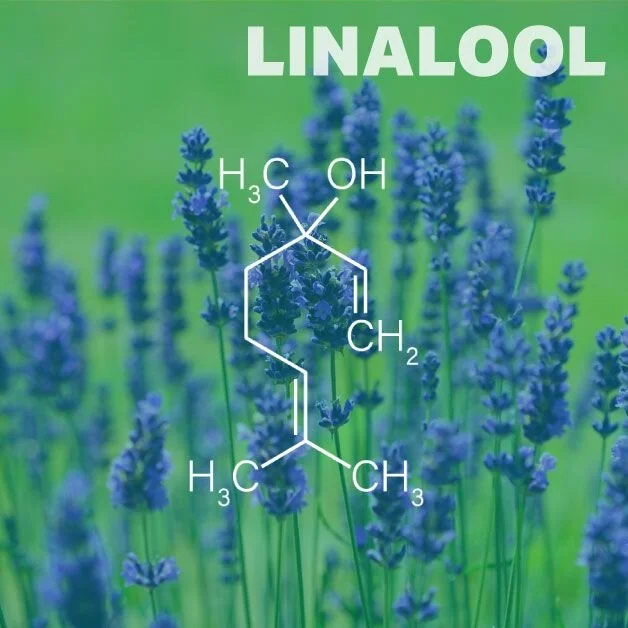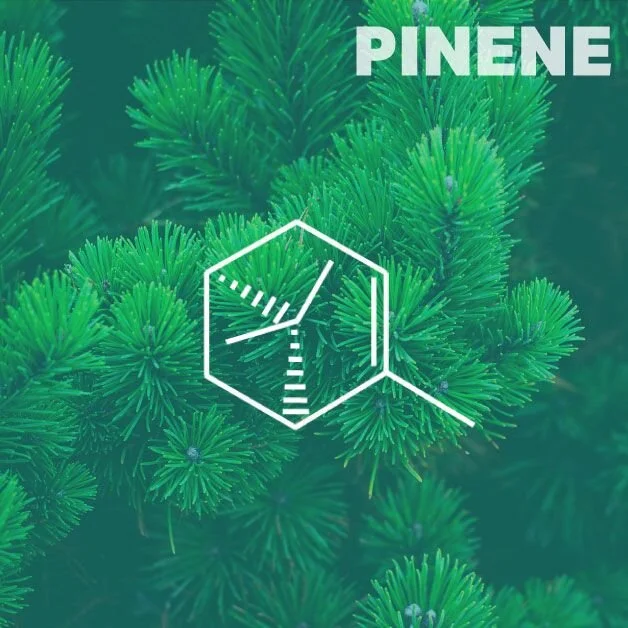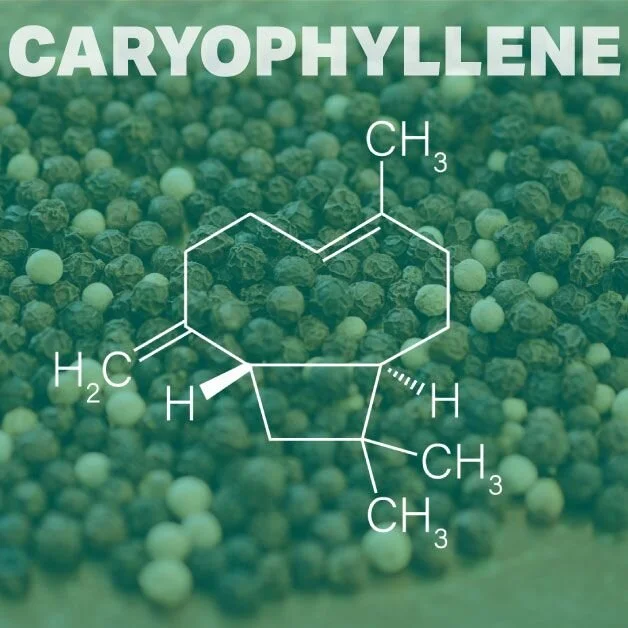MYRCENE
Myrcene is one of the most abundant terpenes found in hemp. This powerful terpene is also found in mangoes, thyme, and hops. Its aroma is described as herbaceous, musky, and earthy.
Myrcene most often produces very relaxing sedative effects, and is the primary compound responsible for the famous “couch-lock” effect. In addition to sedative effects that may have potential use for sleep disorders like insomnia, other reported medicinal benefits of Myrcene may include muscle relaxation, gastric protection, and anti-inflammatory action.
The RELAX Caramels have Myrcene to enhance the calming effects.
LIMONENE
Limonene is a recognizable terpene found most readily in fruit rinds, particularly citrus fruits like lemon and grapefruit. In addition to citrus, Limonene is prevalent in herbs like rosemary and peppermint. The scent is strongly citrusy, sweet-tart, and fresh.
Limonene typically produces mood-elevating effects and a feeling of enhanced focus. Possible medicinal benefits of Limonene include gastroprotective action such as reducing heartburn, ulcers, and gallstones, as well as anti-fungal properties and useful anti-depressant effects.
The CLARITY Caramels have Limonene to enhance the uplifting, energizing effects.
LINALOOL
Linalool is the terpene responsible for the much-beloved scent of lavender oil. In addition to the lavender plant, it can be found naturally in rosewood and sage. The aroma is floral and sweet with subtle hints of citrus.
Linalool has long been valued for its relaxing and calming effects, and hemp strains with high Linalool percentages typically produce relaxed body experiences. Apart from its usefulness for relaxation and sleep, Linalool’s studied medicinal benefits include potential immune system support, anti-convulsion properties, and anti-microbial action.
The RELAX Caramels have Linalool to lend a delightful floral note & calming effects.
α-PINENE
Pinene, or α-Pinene, is a well-known terpene responsible for the iconic smell of pine forests. While its most abundant natural source is pine trees, it can also be found in herbs like parsley and dill. The scent is very refreshing, earthy, and woodsy.
Pinene usually produces lightly energizing effects with a sense of calm rather than anxious jitters. Pinene is also thought to enhanced alertness, which explains why a hike through the forest can leave you feeling recharged and centered. A-Pinene has even been reported to increase creativity for some.
Possible medicinal benefits of Pinene include improved airflow and bronchodilation (making it potentially useful for asthma and other respiratory condition effects), anti-inflammatory action, and improved memory retention.
β-CARYOPHYLLENE
Caryophyllene, or β-Caryophyllene, is a complex terpene found in many herbs and spices. This terpene is most prevalent in black pepper, cloves, and cotton plants. The sharp aroma is peppery, spicy, and woodsy.
β-Caryophyllene can produce calming sedative effects and is valued in herbal medicine for its anti-anxiety properties. In fact, this terpene may be responsible for the reported relief that comes from chewing black peppercorns during acute anxiety attacks.
β-Caryophyllene is the only known terpene that can directly activate the CB2 receptor of the Endocannabinoid System, giving it powerful pharmacological effects that science is working to understand - it has thus far been reported to have anti-depressant, anti-inflammatory, anti-microbial, and gastrointestinal protection benefits in studies.
TERPINOLENE
Terpinolene is one of the least-abundant terpenes typically found in hemp, yet its effects on the nuanced CBD experience can be pronounced even in small percentages. Naturally found in apples, nutmeg, and tea tree oil, Terpinolene’s scent is floral and herbaceous with a refreshing piney note.
Terpinolene’s effects can vary based on its synergistic action with other hemp compounds as well as the individual’s body chemistry. The terpene itself is often sedative and relaxing when used in isolation, but may act as a stimulant when used in conjunction with cannabinoids of hemp. Potential medicinal benefits of Terpinolene may include insomnia relief, antioxidant action, and anti-microbial properties.
EUCALYPTOL
Also known as Cineol or Cineole, Eucalyptol is a powerfully medicinal terpene found in many plants and herbs including ginger, bay laurel, and of course eucalyptus. The aroma is refreshing, minty, and slightly sweet.
Eucalyptol can contribute to energizing, uplifting effects in hemp strains with high percentages of the terpene. The aroma can have a refreshing effect on the lungs and sinuses, making it a popular ingredient in congestion-relieving chest rubs and salves.
Other studied medicinal benefits of Eucalyptol include improved circulation, anti-bacterial/anti-fungal properties, and pain relief.
HUMULENE
Humulene is a terpene somewhat often found in hemp and its plant family cousin, hops. It can also be found in cloves, ginseng, and basil. The scent is earthy, musky, and slightly spicy.
Humulene is also known as α-Caryophyllene due to its near-identical structure to β-Caryophyllene, which may lead to potentially similar relaxing effects in many cases - though they are typically not as strong, and Humulene is not able to interact with the Endocannabinoid receptors like β-Caryophyllene.
The unique medicinal benefits of Humulene have been known to Eastern Medicine practitioners for centuries; it is particularly valued as an anti-inflammatory and antibacterial agent in herbal medicine, in addition to showing promise as a tumor-fighting agent in some studies. A unique benefit of Humulene may be its potential effectiveness as an appetite suppressant.
NEROLIDOL
Nerolidol is the primary terpene found in Neroli essential oil harvested from bitter orange blossom, and is frequently present in minute concentrations in hemp. Nerolidol is also found in jasmine, citronella, and ginger. The aroma is floral, with notes of citrus fruit and tree bark.
Nerolidol is typically associated with calming, relaxing effects. The most well-observed medicinal benefits of Nerolidol are anti-parasitic action and other anti-microbial efficacy.
Nerolidol is also noted for its ability to enhance the penetration of topically-applied medicines, making it a popular natural additive to CBD-infused topicals and lotions, as well as increasing the absorption of sublingually dissolved edibles.
OCIMENE
Ocimene is a common terpene in fragrant herbs such as mint, parsley and basil, as well as many orchid flower subspecies. The scent is described as sweet, woodsy, and herbaceous.
Ocimene is often associated with uplifting, energizing effects. The terpene functions as part of the hemp plant’s external defense system, which explains its observed powerful anti-microbial and anti-fungal properties.
Ocimene’s other studied medicinal benefits include antioxidant action, cough suppression, and decongestion.
α-BISABOLOL
Bisabolol, or a-Bisabolol, is the most common terpene found in chamomile & chamomile tea. The aroma is fresh and floral with a gentle sweetness.
Bisabolol is predominantly associated with calming, relaxing effects like those of chamomile tea, which may transfer to hemp & CBD effects in products containing the terpene.
a-Bisabolol is prized as a gentle anti-depressant in herbal medicine, and is noted to soothe the skin on application, making this terpene a great addition to topical CBD products.
FARNESENE
Farnesene, which is primarily found in the form of β-Farnesene in hemp, is becoming more prominent in CBD products made with craft hemp flower. This terpene is commonly found in fruit rinds and is responsible for the characteristic “green apple” scent.
Farnesene seems to typically produce calming, balanced effects in many cases, and reported medical benefits have included anti-inflammatory benefits like those found in turmeric, another natural source of farnesene. This terpene may be another tumor-fighting agent working to suppress the spread of cancer cells. Lastly, farnesene has been observed to have anti-spasm activities for relieving painful muscle and nerve overactivity.













